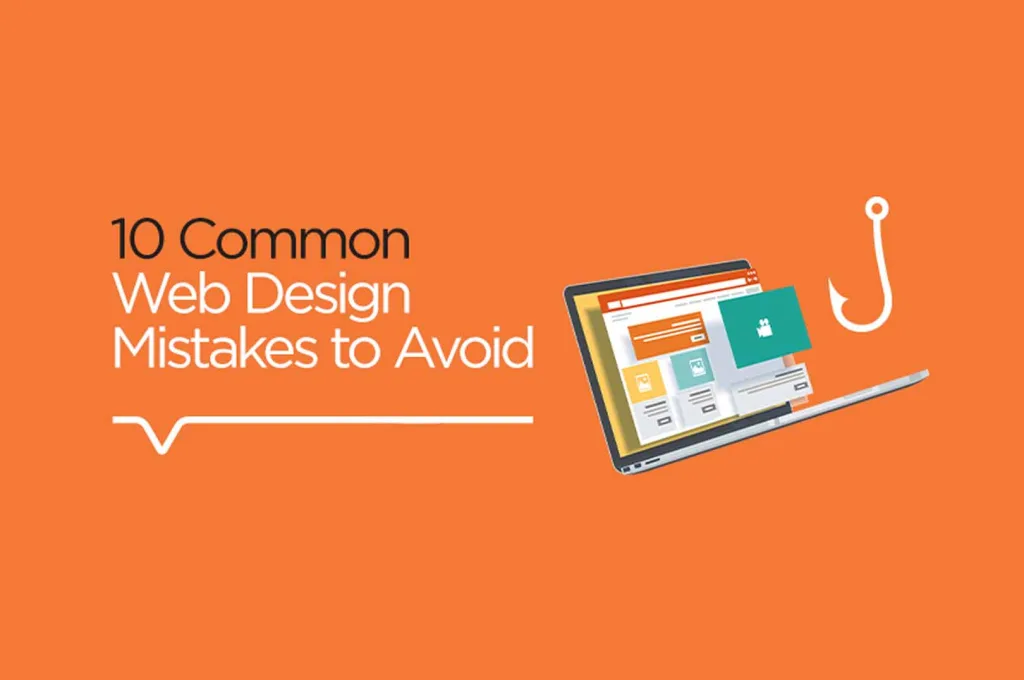10 Common Web Development Mistakes to Avoid
Introduction
Web development is an ever-evolving field, and it can be difficult to keep up with the latest trends and technologies. However, there are some common mistakes that can be easily avoided if you know what to look out for. In this article, we will discuss 10 of the most common web development mistakes and how to avoid them. We will cover topics such as poor coding practices, inadequate testing, and security vulnerabilities. By understanding these mistakes and taking the necessary steps to avoid them, you can ensure that your web development projects are successful.

How to Avoid Over-Complicating Your Website Design
Creating a website can be a daunting task, especially if you are new to the process. It is easy to become overwhelmed by the sheer number of options available and the complexity of the design process. However, it is important to remember that a website should be simple and straightforward. Over-complicating your website design can lead to confusion and frustration for your visitors. Here are some tips to help you avoid over-complicating your website design.
1. Keep it Simple: Simplicity is key when it comes to website design. Avoid using too many colors, fonts, and images. Stick to a few basic colors and fonts that are easy to read and navigate. Keep the layout of your website clean and organized.
2. Focus on Functionality: Your website should be designed with the user in mind. Make sure that all of the features and functions are easy to use and understand. Avoid adding too many bells and whistles that may be confusing or unnecessary.
3. Use Clear Navigation: Make sure that your website has a clear and intuitive navigation system. Visitors should be able to easily find the information they are looking for without having to search through multiple pages.
4. Test Your Design: Before launching your website, make sure to test it out. Ask friends and family to take a look and provide feedback. This will help you identify any areas that may be confusing or need improvement.
By following these tips, you can ensure that your website design is simple and straightforward. This will help create a positive user experience and make it easier for visitors to find the information they need.
The Dangers of Not Testing Your Website for Cross-Browser Compatibility
Cross-browser compatibility is an essential part of website development. It ensures that a website looks and functions correctly on all major web browsers. Without testing for cross-browser compatibility, websites can suffer from a variety of issues that can lead to a poor user experience.
The most common issue that arises from not testing for cross-browser compatibility is the display of content. Different web browsers render content differently, so if a website is not tested for compatibility, it may display incorrectly on certain browsers. This can lead to a website appearing broken or distorted, which can be off-putting to visitors.
Another issue that can arise from not testing for cross-browser compatibility is the functionality of the website. Different web browsers may interpret code differently, which can lead to certain features not working correctly. This can be especially problematic if the website relies on certain features to function properly.
Finally, not testing for cross-browser compatibility can lead to a website not being optimized for certain browsers. This can lead to a website loading slowly or not at all on certain browsers, which can be a major turn-off for visitors.
In conclusion, it is essential to test a website for cross-browser compatibility in order to ensure that it looks and functions correctly on all major web browsers. Without testing, websites can suffer from a variety of issues that can lead to a poor user experience.
The Importance of Keeping Your Website Secure
In today’s digital age, it is essential for businesses to have a secure website. A secure website is one that is protected from malicious attacks, such as hacking, malware, and viruses. It is also important to ensure that the website is compliant with data protection regulations.
Having a secure website is essential for businesses for a number of reasons. Firstly, it helps to protect the company’s data and information from being accessed by unauthorized individuals. This includes customer data, financial information, and other sensitive information. Secondly, it helps to protect the company’s reputation. If a website is hacked or compromised, it can lead to negative publicity and a loss of customer trust.
Thirdly, a secure website helps to protect the company’s customers. If a website is not secure, customers’ personal information, such as credit card numbers, can be stolen and used for fraudulent activities. This can lead to financial losses for the customer and damage the company’s reputation.
Finally, a secure website helps to protect the company’s website from being taken down by malicious attacks. If a website is hacked or infected with malware, it can be taken offline, resulting in a loss of revenue and customers.
In order to keep a website secure, businesses should ensure that they have the latest security measures in place. This includes using strong passwords, installing firewalls, and regularly updating software. Additionally, businesses should ensure that their website is compliant with data protection regulations, such as the General Data Protection Regulation (GDPR).
By taking the necessary steps to keep their website secure, businesses can protect their data, reputation, customers, and website from malicious attacks. This will help to ensure that their website remains safe and secure, and that their customers’ data is protected.
How to Avoid Poorly Optimized Images and Content
Poorly optimized images and content can have a negative impact on the performance of a website. To ensure that your website is running at its best, it is important to take steps to avoid poorly optimized images and content. Here are some tips to help you do just that:
1. Use the Right File Format: Different file formats are better suited for different types of images. For example, JPEGs are best for photographs, while PNGs are better for graphics. Using the wrong file format can lead to poor image quality and slow loading times.
2. Compress Images: Compressing images can reduce their file size without sacrificing quality. This will help to ensure that your images are loading quickly and efficiently.
3. Optimize Content: Content should be optimized for search engines and users. This includes using keywords, writing concisely, and avoiding unnecessary words.
4. Use a Content Delivery Network (CDN): A CDN is a network of servers that can help to speed up the delivery of content to users. This can help to reduce loading times and improve the overall performance of your website.
5. Monitor Performance: Regularly monitoring the performance of your website can help to identify any issues that may be causing slow loading times or other performance issues.
By following these tips, you can ensure that your website is running at its best and avoid any issues caused by poorly optimized images and content.
The Pitfalls of Not Having a Responsive Design
The lack of a responsive design can have serious consequences for businesses. Responsive design is a web design approach that ensures a website is optimized for any device, from desktop computers to mobile phones. Without a responsive design, businesses may find themselves losing customers and potential revenue.
First, a website without a responsive design may be difficult to navigate on mobile devices. Mobile users are accustomed to a certain level of convenience and ease of use, and if a website is not optimized for their device, they may become frustrated and leave the site. This can lead to a decrease in website traffic and a decrease in potential customers.
Second, a website without a responsive design may not be indexed properly by search engines. Search engines prioritize websites that are optimized for mobile devices, and if a website is not optimized, it may not appear in search engine results. This can lead to a decrease in organic traffic and a decrease in potential customers.
Third, a website without a responsive design may not be secure. Mobile devices are more vulnerable to security threats, and if a website is not optimized for mobile devices, it may be more susceptible to malicious attacks. This can lead to a decrease in customer trust and a decrease in potential customers.
Finally, a website without a responsive design may not be compliant with industry standards. Many industries have specific standards for website design, and if a website is not compliant, it may be penalized or even blocked from certain markets. This can lead to a decrease in potential customers and a decrease in potential revenue.
In conclusion, businesses should ensure their website has a responsive design in order to avoid the pitfalls of not having one. A responsive design ensures a website is optimized for any device, is indexed properly by search engines, is secure, and is compliant with industry standards. This can lead to an increase in website traffic, an increase in customer trust, and an increase in potential revenue.
Conclusion
In conclusion, web development mistakes can be costly and time consuming to fix. It is important to be aware of the 10 common web development mistakes to avoid in order to ensure a successful website. By taking the time to plan ahead, test thoroughly, and use the right tools, web developers can create a website that is both user-friendly and effective.
If you’re a web developer, you know how important it is to avoid common mistakes. To help you stay on top of your game, check out this list of 10 Common Web Development Mistakes to Avoid. Visit Elegant to learn more about web development and how to avoid these common mistakes.







